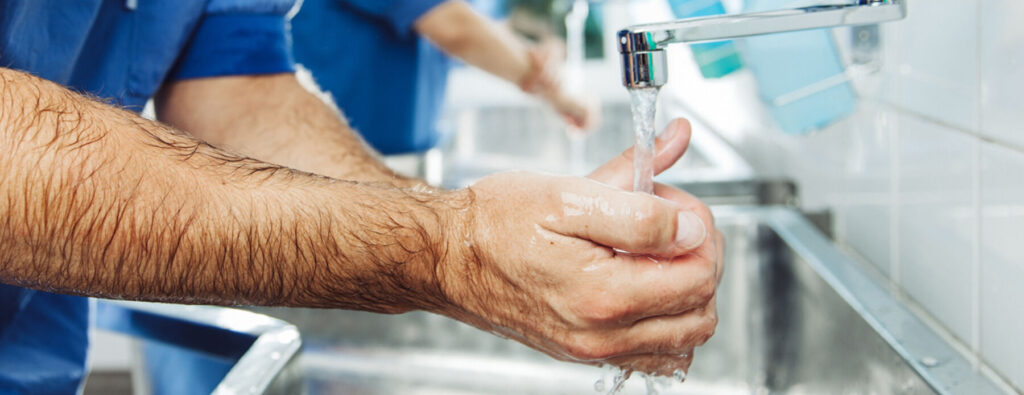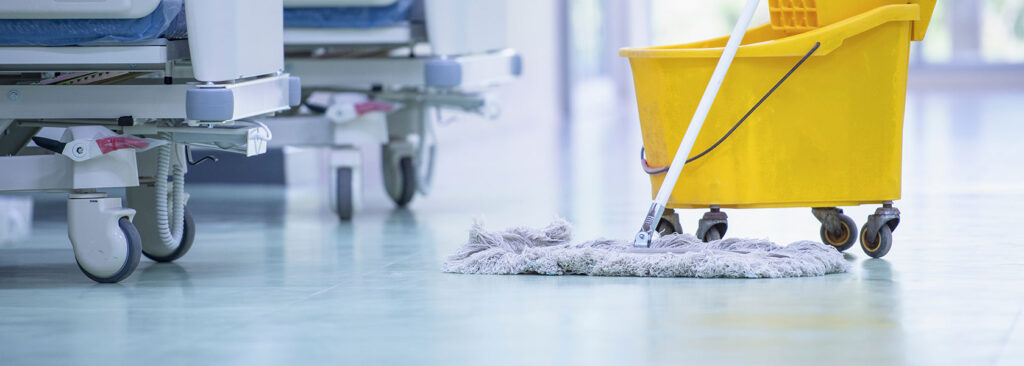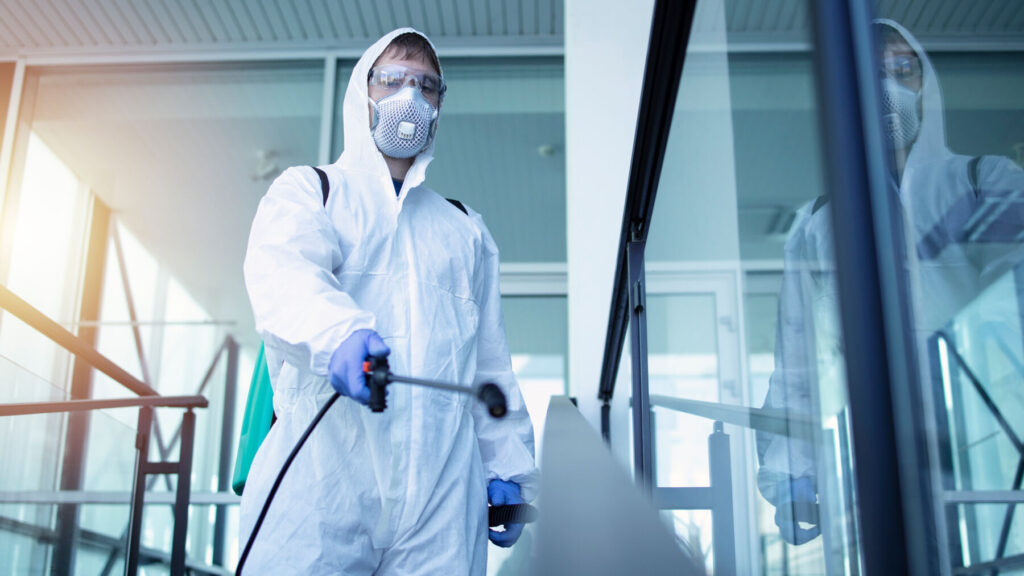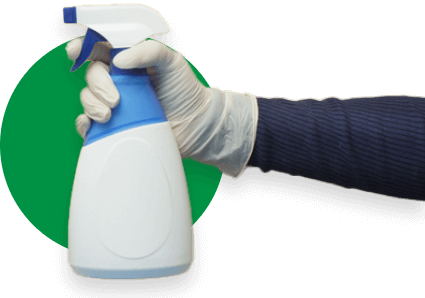The primary purpose of hospitals and medical facilities is to diagnose and treat various diseases and health conditions. However, without proper cleanliness and hygiene, healthcare facilities can make matters worse. So why is it important to keep hospitals clean? Without a clean environment, immuno-compromised individuals are susceptible to potentially dangerous pathogens.
Patient care starts with maintaining a safe and clean environment. Several studies have shown that healthcare-associated infections are on the rise. This article will discuss how to limit the amount of hospital-acquired infections properly.
What is Hospital Hygiene?
Hospital hygiene refers to keeping environmental surfaces clean, effectively reducing the risk of spreading healthcare-associated infections. According to various rules and regulations, medical facilities are required to maintain a certain standard of cleanliness. Awareness of these rules and regulations has grown exponentially since the rise of the COVID-19 pandemic.
Handwashing and hand sanitizing have been pushed to the forefront as a means of eliminating hospital-acquired infections. Failing to do so, especially in a healthcare facility, can become disastrous for patients and healthcare workers alike. Actively cleaning and sanitizing high-touch surfaces throughout the healthcare facility is also crucial.

The Importance Behind Keeping Hospitals Clean
There are many reasons to keep a healthcare facility clean. This section will discuss the various reasons why it’s so important to ensure medical facilities uphold a clean environment.
Ensure the Safety and Well-being of Staff and Employees
In a healthcare facility, the health and wellness of healthcare workers is paramount. Without a healthcare worker, patient care is impossible. Consistent and thorough cleaning practices allow a hospital to run smoothly and effectively.
When healthcare workers are healthy and feel safe, they are often more productive and efficient. Proper cleaning habits ensure both the mental and physical health of employees.
Protect Patients from Hospital Acquired Infections (HAIs)
Hospital-acquired infections, also known as HAIs, are unfortunately a common occurrence in the United States. In 2011, an estimated 721,800 hospital-acquired infections occurred in the United States alone.
Of those cases, 75,000 people died. Many of these infections could have been prevented with thorough and attentive cleaning practices.
Adherence to Regulations and Guidelines in the Healthcare Industry
Aside from the moral duty of those in the healthcare industry, failing to adhere to cleanliness rules and regulations can lead to large fines and other penalties. Simple cleaning methods are not thorough enough in a hospital setting.
One study showed that 50% of environmental surfaces remained unclean after one manual cleaning. Rules and regulations by the CQC are designed to save patients and healthcare workers from potential environmental contamination.
Builds the Hospital’s Reputation and Leaves a Longer Lasting Impression
Individuals who acquire healthcare-associated infections are far less likely to return to that facility. In such cases, word will likely spread to other people, ultimately discouraging them from choosing that particular facility. Even if an HAI is not acquired, visibly dirty waiting areas, corridors, or reception areas may cause patients to think twice before returning.
In almost any business-type setting, first impressions are key. That’s why it’s so important to maintain a visibly clean environment.

Why Poor Hospital Hygiene Leads to the Spread of Infection
When one person contracts an illness in a hospital setting, everyone is now exposed. When we’re sick, the environmental surfaces and items we touch are now crawling with contagious germs and bacteria. Some illnesses can be spread just by speaking to or breathing near a non-infected person.
Due to the amount of sick people in a healthcare facility, the odds of contracting a contagious illness are much higher than out in the world. To make matters worse, the microbes spread in hospital settings often create more severe illnesses that are more resistant to conventional antibiotics.
Poor hospital hygiene is the main reason for such outbreaks. Daily cleaning practices are essential to the health of every healthcare worker and patient in a hospital setting. While it can seem almost impossible to stop environmental contamination once it begins, it is possible to prevent it with proper hygiene habits.
What Methods Are Utilized to Ensure Cleanliness in Hospitals?
To ensure cleanliness, many hospitals turn to medical cleaning janitorial services. Led by professionals with years of experience, medical cleaning services understand the dos and don’ts of hospital cleaning.
Here are some procedures and methods that medical janitorial services use to ensure cleanliness in healthcare settings.
Frequent Cleaning and Disinfection
Ensuring that hospitals receive the cleaning services they need begins with organization. Having a hospital cleaning checklist allows individuals to clean in an efficient and timely manner. A checklist should include the following:
- Clean and disinfect high-touch points such as elevator buttons, light switches, door handles, and toilet flushers.
- Clean floors, walls, windows, and doors daily.
- Restock floor cleaners, glass cleaners, neutral cleaners, bleach, virucides, antibacterial agents, and fungicides.
Administering Deep Cleaning Procedures
Deep cleaning is essential to stop the spread of harmful pathogens. Advanced cleaning goes beyond the daily disinfection protocols.
These procedures include the use of Hydrogen Peroxide (H2O2) fogging, which is designed to kill highly dangerous viruses and bacteria that traditional disinfectants cannot. H2O2 fogging can get into all spaces within an indoor environment, ensuring a highly effective form of disinfecting.
Infection Prevention and Control Measures
Another way to easily spread germs and bacteria is through biohazardous waste. Having a waste management system in place based on healthcare rules and regulations is essential to maintaining a safe facility.
Items such as used needles, soiled rags, and used medical equipment need to be properly stored, segregated, and disposed of to avoid potentially harmful complications. Internal audits are a smart way to make sure that all departments are staying true to necessary protocols.
Other infection prevention methods include regular hand washing, proper use of protective equipment (PPEs), and isolating after exposure to potential illness.
Air and Water Quality Control
To keep the air in a facility from staying stagnant, there must be a high-quality air filtration system in place. Airborne diseases such as COVID-19, the flu, tuberculosis, and chickenpox can be spread easily without properly working ventilation systems.
Water quality is also pivotal to maintaining a safe and healthy hospital environment. Testing the water regularly for waterborne pathogens, particularly the sinks, showers, and ice machines, is essential. Water quality control keeps people safe and can help to extend the lifespan of hospital equipment.
Regular Cleaning Inspections
Checking for damaged equipment and other safety hazards is a great way to ensure that patients are properly diagnosed and treated. Without tending to and cleaning equipment regularly, facilities are more susceptible to outbreaks and potential lawsuits from patients.
Minimizing Potential for Cross-Contamination
One way to combat potential cross-contamination is by creating a color-coded cleaning system. For example, individuals who clean the general areas, wards, and offices can wear blue gloves and aprons. Those cleaning bathrooms, showers, toilets, and basins can wear red. Those cleaning kitchen areas can wear green, and so on.
Before cleaning other areas, all gloves and other equipment must be changed. This is a fantastic way to prevent issues of cross-contamination.

The Benefits of Investing in Professional Cleaning Services
HAIs are damaging to people’s health as well as a hospital’s reputation. Failing to take the risk of an outbreak can lead to a myriad of unnecessary physical, mental, and financial issues.
While it’s possible to maintain a clean healthcare facility using in-house workers, outsourcing hospital cleaning can lessen the burden on hospital employees.
Professional cleaning agencies are trained to handle all cleaning scenarios and have access to the most up-to-date equipment and cleaning supplies. Due to the thoroughness of professional cleaners, outsourcing tends to save hospitals thousands in legal fees caused by HAIs.
Experience Top-Notch Cleanliness for Your Medical Office with Dallas Janitorial Services!
Hospitals are a breeding ground for various airborne and direct contact illnesses. Without proper, hands-on cleaning methods, healthcare professionals and patients are susceptible to serious diseases. That’s why having a professional cleaning service is so important.
At Dallas Janitorial Services, we understand that a properly cleaned and sanitized medical facility can save lives. We have been serving the greater Dallas community for more than 15 years, providing the experience and know-how that your facility deserves.
For a hospital, health and safety means everything. Let us help you in your mission. Contact Dallas Janitorial Services today!

Frequently Asked Questions About the Importance of Keeping Hospitals Clean
What is the most important hygiene practice?
According to the CDC, hand washing is the most important hygiene practice.
How to choose the right healthcare facility cleaning service?
When searching for a healthcare facility cleaning service, you should consider their reputation, experience, accreditation, use of new technology, and staff quality.
What are the seven steps of cleaning in the hospital?
The seven steps of cleaning in a hospital are the following:
- Trash disposal
- Dusting the whole facility
- Wipe down surfaces with disinfectant
- Restock items and products as needed
- Clean and dry mop floors
- Inspect areas for any missed spots
- Wet mop floor surfaces
What are the benefits of cleaning in health?
Having a clean and healthy environment helps to maintain a strong immune system, reduces stress, helps sleep habits, increases productivity, and can improve heart and overall health.
How to improve cleanliness in the hospital?
Having a systematic approach to cleaning is a huge help. Going from rarely-touch areas to high-touch, dirtier areas helps to reduce the spread of germs and bacteria. Moving from the top of a room to the bottom is also encouraged, removing the risk of cross-contamination.







